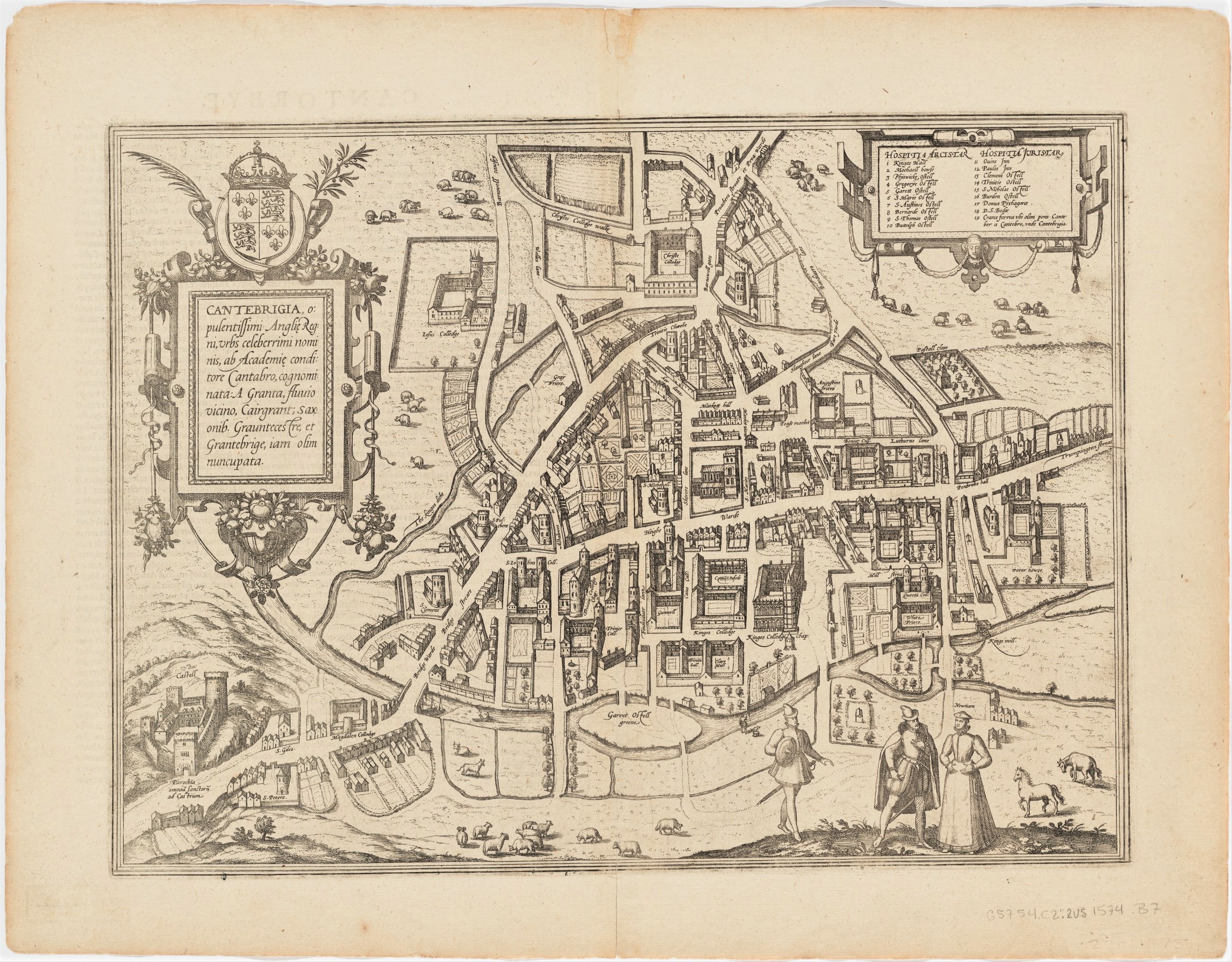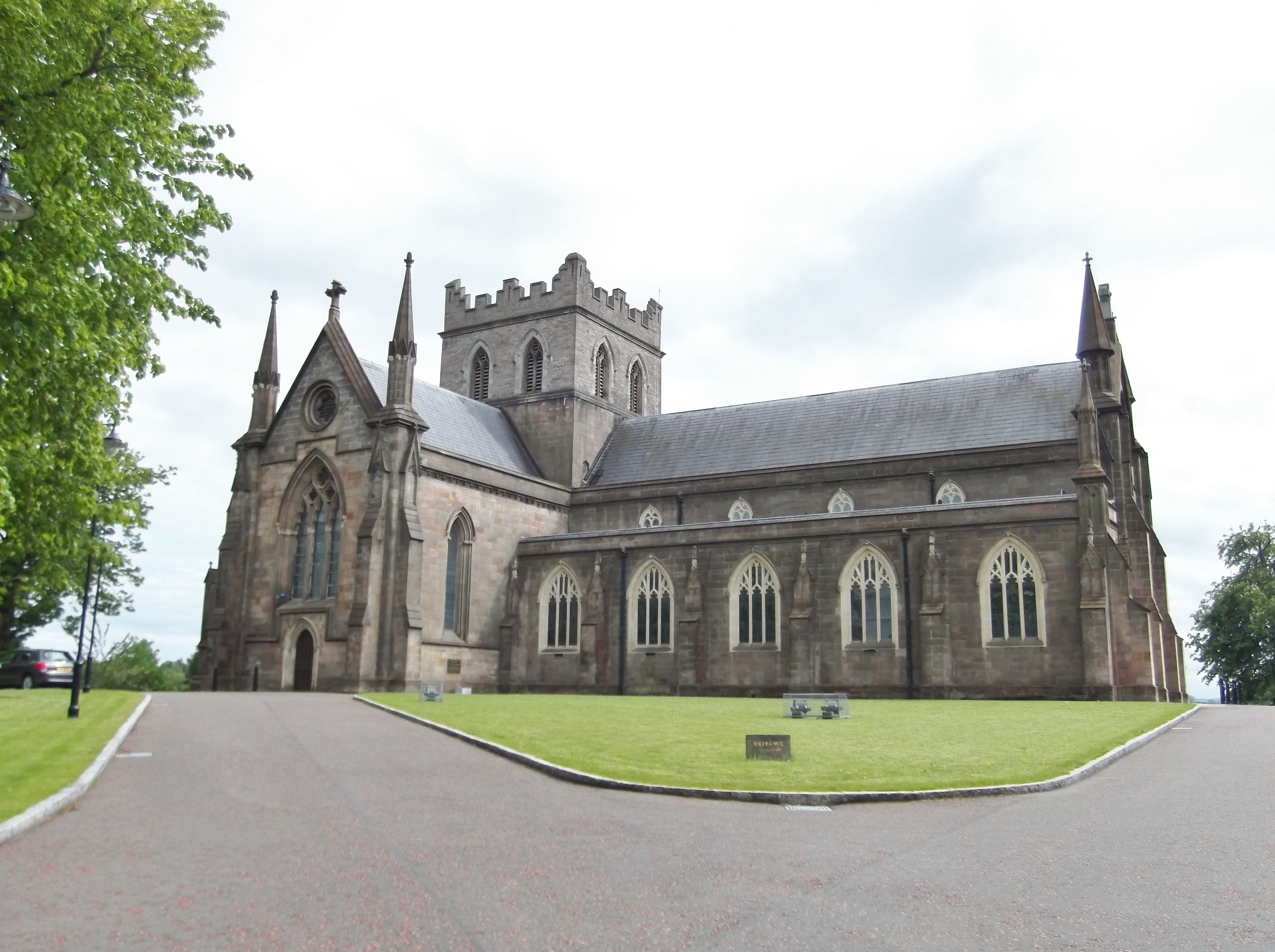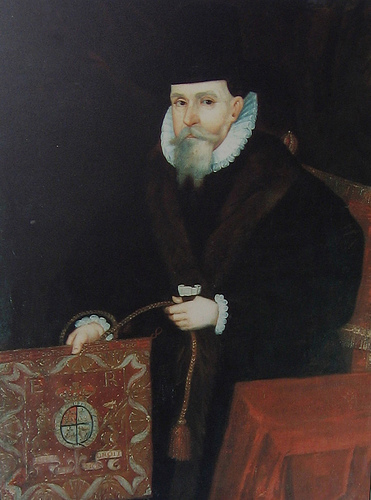|
Robert Weston
Robert Weston ( – 20 May 1573) of Lichfield, Staffordshire, was an English civil lawyer, who was Dean of the Arches and Lord Chancellor of Ireland in the time of Queen Elizabeth. Life Robert Weston was the 3rd son of John Weston (d. after 1525), of Weeford, Staffordshire, and Cecilia Neville, daughter of Ralph Neville, Lord Neville, and sister of Ralph Neville, 4th Earl of Westmorland. The Weston family of Gloucestershire, who produced another senior Irish judge in William Weston, were probably cousins of Robert. He entered All Souls College, Oxford and was elected Fellow in 1536. He studied Civil Law and attained the degree of BCL on 17 February 1538 and DCL on 20 July 1556. From 1546 to 1549, he was a principal of Broadgate Hall, and at the same time deputy reader in civil law at the University, under Dr John Story. He was not a clergyman, and his later appointment to two lucrative deaneries is said to have greatly troubled his conscience.. Accessed 7 Janu ... [...More Info...] [...Related Items...] OR: [Wikipedia] [Google] [Baidu] |
Lichfield
Lichfield () is a city status in the United Kingdom, cathedral city and Civil parishes in England, civil parish in Staffordshire, England. Lichfield is situated south-east of the county town of Stafford, north-east of Walsall, north-west of Tamworth, Staffordshire, Tamworth, south-west of Burton upon Trent and 14 miles (22.5 km) north of Birmingham. At the time of the 2021 Census, the population was 34,738 and the population of the wider Lichfield District was 106,400. Notable for its three-spired medieval Lichfield Cathedral, cathedral, Lichfield was the birthplace of Samuel Johnson, the writer of the first authoritative ''A Dictionary of the English Language, Dictionary of the English Language''. The city's recorded history began when Chad of Mercia arrived to establish his Diocese of Lichfield, bishopric in 669 AD and the settlement grew as the ecclesiastical centre of Mercia. In 2009, the Staffordshire Hoard, the largest hoard of Anglo-Saxons, Anglo-Saxon gold and s ... [...More Info...] [...Related Items...] OR: [Wikipedia] [Google] [Baidu] |
Matthew Parker
Matthew Parker (6 August 1504 – 17 May 1575) was an English bishop. He was the Archbishop of Canterbury in the Church of England from 1559 to his death. He was also an influential theologian and arguably the co-founder (with Thomas Cranmer, a previous Archbishop of Canterbury, and the theologian Richard Hooker) of a distinctive tradition of Anglican theological thought. Parker was one of the primary architects of the Thirty-nine Articles, the defining statements of Anglican doctrine. The Parker collection of early English manuscripts, including the book of St Augustine Gospels and "Version A" of the ''Anglo-Saxon Chronicle'', was created as part of his efforts to demonstrate that the English Church was historically independent of Holy See, Rome and was one of the world's most important collections of ancient manuscripts. Along with the pioneering scholar Laurence Nowell, Lawrence Nowell, Parker's work concerning Old English literature laid the foundation for Anglo-Saxon stu ... [...More Info...] [...Related Items...] OR: [Wikipedia] [Google] [Baidu] |
Church Of Ireland
The Church of Ireland (, ; , ) is a Christian church in Ireland, and an autonomy, autonomous province of the Anglican Communion. It is organised on an all-Ireland basis and is the Christianity in Ireland, second-largest Christian church on the island after the Catholic Church in Ireland, Roman Catholic Church. Like other Anglican churches, it has retained elements of pre-Reformation practice, notably its episcopal polity, while rejecting the papal primacy, primacy of the pope. In theological and liturgical matters, it incorporates many principles of the Reformation, particularly those of the English Reformation, but self-identifies as being both Protestantism, Reformed and Catholicity, Catholic, in that it sees itself as the inheritor of a continuous tradition going back to the founding of Celtic Christianity, Christianity in Ireland. As with other members of the global Anglican communion, individual parishes accommodate differing approaches to the level of ritual and formality ... [...More Info...] [...Related Items...] OR: [Wikipedia] [Google] [Baidu] |
Gallstones
A gallstone is a stone formed within the gallbladder from precipitated bile components. The term cholelithiasis may refer to the presence of gallstones or to any disease caused by gallstones, and choledocholithiasis refers to the presence of migrated gallstones within bile ducts. Most people with gallstones (about 80%) are asymptomatic. However, when a gallstone obstructs the bile duct and causes acute cholestasis, a reflexive smooth muscle spasm often occurs, resulting in an intense cramp-like visceral pain in the right upper part of the abdomen known as a biliary colic (or "gallbladder attack"). This happens in 1–4% of those with gallstones each year. Complications from gallstones may include inflammation of the gallbladder (cholecystitis), inflammation of the pancreas (pancreatitis), obstructive jaundice, and infection in bile ducts ( cholangitis). Symptoms of these complications may include pain that lasts longer than five hours, fever, yellowish skin, vomiting, dar ... [...More Info...] [...Related Items...] OR: [Wikipedia] [Google] [Baidu] |
Gout
Gout ( ) is a form of inflammatory arthritis characterized by recurrent attacks of pain in a red, tender, hot, and Joint effusion, swollen joint, caused by the deposition of needle-like crystals of uric acid known as monosodium urate crystals. Pain typically comes on rapidly, reaching maximal intensity in less than 12 hours. The Metatarsophalangeal joint, joint at the base of the Hallux, big toe is affected (''Podagra'') in about half of cases. It may also result in Tophus, tophi, kidney stones, or Urate nephropathy, kidney damage. Gout is due to persistently elevated levels of uric acid (urate) in the blood (hyperuricemia). This occurs from a combination of diet, other health problems, and genetic factors. At high levels, uric acid crystallizes and the crystals deposit in joints, tendons, and surrounding tissues, resulting in an attack of gout. Gout occurs more commonly in those who regularly drink beer or sugar-sweetened beverages; eat foods that are high in purines such ... [...More Info...] [...Related Items...] OR: [Wikipedia] [Google] [Baidu] |
Adam Loftus (bishop)
Adam Loftus (c. 1533 – 5 April 1605) was an English Roman Catholic priest from North Yorkshire who conformed to Anglicanism following the ascension to the throne of Queen Elizabeth I of England. Loftus subsequently served as Church of Ireland Archbishop of Armagh, Archbishop of Dublin, and Lord Chancellor of Ireland from 1581. Loftus is particularly important to Irish history as the first Provost of Trinity College Dublin and for his central role in the 1584 torture and execution of Archbishop Dermot O'Hurley, who was Beatified by Pope John Paul II as one of the Irish Catholic Martyrs in 1992. Loftus is also notable, through the marriage of his daughter Anne to the son and heir of Sir Henry Colley and their subsequent issue, as the ancestor of Arthur Wellesley, 1st Duke of Wellington. Early life Adam Loftus was born in 1533, the second son of Edward Loftus, bailiff of Swineside (also described as Swineshead) in Coverdale, one of the Yorkshire Dales, for Coverham Abbey. Edwa ... [...More Info...] [...Related Items...] OR: [Wikipedia] [Google] [Baidu] |
Bishop Of Armagh
The Archbishop of Armagh is an archiepiscopal title which takes its name from the see city of Armagh in Northern Ireland. Since the Reformation, there have been parallel apostolic successions to the title: one in the Catholic Church and the other in the Church of Ireland. The archbishop of each denomination also holds the title of Primate of All Ireland. In the Church of Ireland, the archbishop is John McDowell, who is the ecclesiastical head of the Church of Ireland and the diocesan bishop of the Diocese of Armagh. He was elected as archbishop in March 2020 and translated to the role on 28 April 2020. In the Catholic Church, the archbishop is Eamon Martin, who is the ecclesiastical head of the Catholic Church in Ireland, metropolitan of the Province of Armagh and the ordinary of the Archdiocese of Armagh. He succeeded on 8 September 2014, having been ordained Coadjutor Archbishop of Armagh on 21 April 2013 at St Patrick's Cathedral, Armagh. History In the medieval Irish ... [...More Info...] [...Related Items...] OR: [Wikipedia] [Google] [Baidu] |
Dean Of St Patrick's Cathedral, Dublin
The Dean of St Patrick's Cathedral is the senior cleric of the Protestant St Patrick's Cathedral, Dublin, elected by the chapter of the cathedral. The office was created in 1219 or 1220, by one of several charters granted to the cathedral by Archbishop Henry de Loundres between 1218 and 1220. For centuries, the Dean of St. Patrick's was the only dean in Dublin and documents of those years often refer to him as the "Dean of Dublin" – but from around 1539 there was also the office of " Dean of Christ Church Cathedral", which had been a priory, headed by a prior and canons. Election The right to elect the Dean of St. Patrick's is vested exclusively in the chapter of the cathedral (though before 1870 there could be an exception where a vacancy occurred due to the promotion of the dean to the office of a bishop) and has been defended against monarchs and even the Pope. Jonathan Swift, perhaps the most famous dean, was appointed against the strong opposition of Queen Anne, who di ... [...More Info...] [...Related Items...] OR: [Wikipedia] [Google] [Baidu] |
Archbishop Of Dublin
The Archbishop of Dublin () is an Episcopal polity, archiepiscopal title which takes its name from Dublin, Republic of Ireland, Ireland. Since the Reformation in Ireland, Reformation, there have been parallel apostolic successions to the title: one in the Catholic Church and the other in the Church of Ireland. The archbishop of each Christian denomination, denomination also holds the title of Primacy of Ireland, Primate of Ireland. History The Roman Catholic Archdiocese of Dublin, diocese of Dublin was formally established by Sigtrygg Silkbeard, Sigtrygg (Sitric) Silkbeard, Kings of Dublin, King of Dublin in 1028, . ''Diocese of Dublin and Glendalough''. Retrieved on 31 March 2010. and the first bishop, Donat, Bishop of Dublin, Dúnán, was consecrated in about the same year. The diocese of Dublin was subject to the Province of ... [...More Info...] [...Related Items...] OR: [Wikipedia] [Google] [Baidu] |
Hugh Curwen
Hugh Curwen ( – 1 November 1568) was an English ecclesiastic and statesman, who served as Archbishop of Dublin and Lord Chancellor of Ireland from 1555 to 1567, then as Bishop of Oxford until his death in November 1568. Previous entries, including the 1911 ''Oxford Dictionary of National Biography'', confused him with Richard Curwen, almoner to Henry VIII. Life Born in Bampton, Westmorland, he is thought to have been educated at Brasenose College, Oxford. He had at least two brothers, Christopher and James, who was the grandfather of Richard Bancroft, Archbishop of Canterbury and 'overseer' of the King James Bible. Career In February 1528, Curwen gained a degree in Canon law, followed by a Master of Arts in 1532. In 1533, he was appointed Rector in the village of Ferriby, Lincolnshire. The following year, England broke with the Catholic Church and formed the Church of England, led by Henry VIII, rather than the Pope. In 1541, he became dean of Hereford, followed by ... [...More Info...] [...Related Items...] OR: [Wikipedia] [Google] [Baidu] |
Henry Sidney
Sir Henry Sidney (20 July 1529 – 5 May 1586) was an English soldier, politician and Lord Deputy of Ireland. Background He was the eldest son of Sir William Sidney of Penshurst (1482 – 11 February 1553) and Anne Pakenham (1511 – 22 October 1544). William Sidney prominent politician and courtier during the reigns of Henry VIII and Edward VI, from both of whom he received extensive grants of land, including the manor of Penshurst in Kent, which became the principal residence of the family. Henry Sidney was brought up at court as the companion of Prince Edward, afterwards King Edward VI, and he continued to enjoy the favour of the Crown, serving under Mary I of England and then, particularly, throughout the reign of Queen Elizabeth I. He was instrumental in the Elizabethan conquest of Ireland, serving as Lord Deputy three times. His career was controversial both at home and in Ireland. Career First trip to Ireland In 1556, Sidney served in Ireland with the Lord Deputy, ... [...More Info...] [...Related Items...] OR: [Wikipedia] [Google] [Baidu] |
Lord Deputy Of Ireland
The Lord Deputy was the representative of the monarch and head of the Irish executive (government), executive under English rule, during the Lordship of Ireland and then the Kingdom of Ireland. He deputised prior to 1523 for the Viceroy of Ireland. The plural form is ''Lords Deputy''. List of Lords Deputy Lordship of Ireland Kingdom of Ireland The title subsequently became Lord Lieutenant of Ireland, with the holder also known informally as the Viceroy. References Citations Bibliography * Further reading * Lordship of Ireland Heads of state of Ireland Early modern history of Ireland Long stubs with short prose {{Ireland-hist-stub ... [...More Info...] [...Related Items...] OR: [Wikipedia] [Google] [Baidu] |








